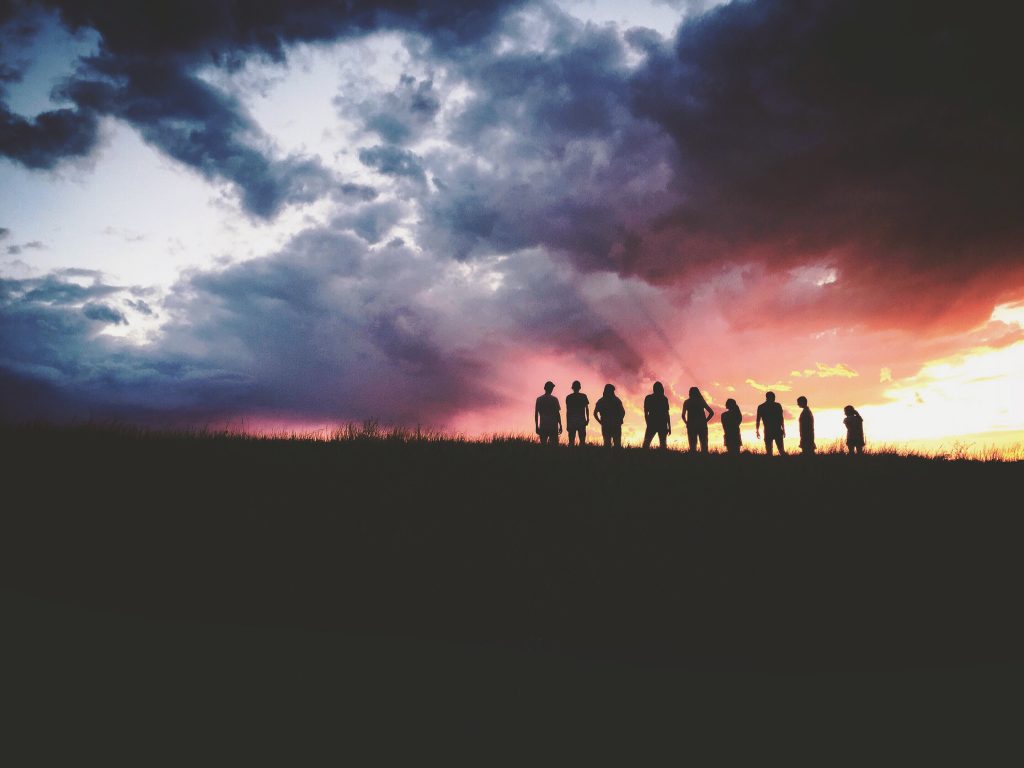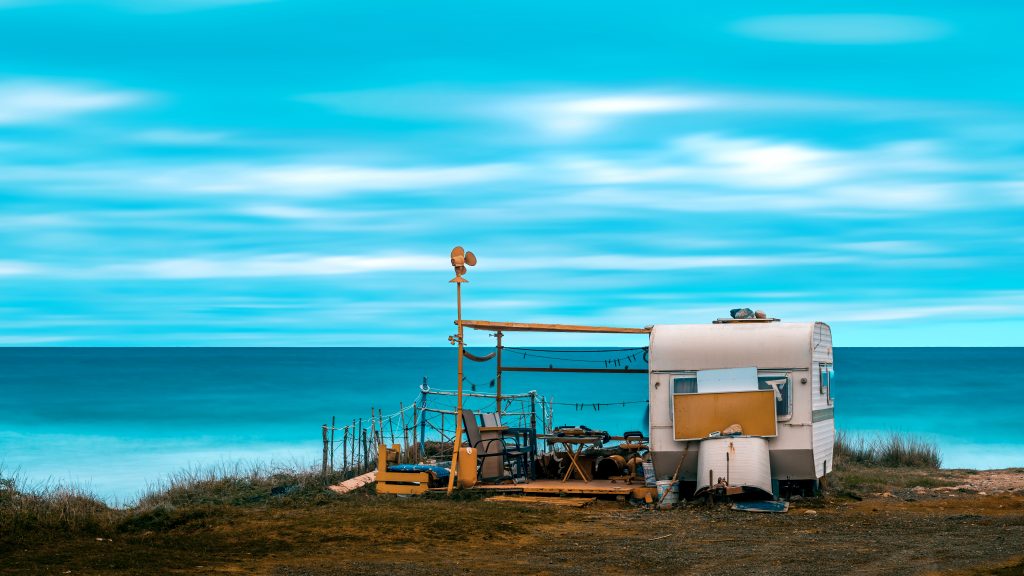Across the first two instalments of this series I’ve spoken about the stages of awareness, research and comparison in the buying cycle.
Purchasing
Your prospect has become aware what they want and where they want to travel; they’ve researched product and travel opportunities with regards to their desire to travel; they’ve compared their top choices according to brand recognition, product quality, brand values, customer service, customer experience, industry and/or manufacturing expertise and the list goes on. Now, they’re ready to pull their cheque book out and invest in their dream…but will they buy from you?
Facilitating Purchase
The customer has walked through the door and they are ready to buy, but, they still need some convincing. They now want you to sell them the dream…that’s right…the dream, not the product.
Product vs. Dream
Having worked in the RV industry, I have come to realise that there are manufacturers, dealers and retailers who believe they are in the business of selling caravans, camper trailers, motorhomes and the like. Unfortunately, they are sadly mistaken. In actual fact, they are not in the business of selling at all!
It is this misconception in the market that can often lead to lower sales, unqualified leads and less than effective customer interactions.
What you are in the business of is “enabling dreams”. You are the enabler…not the salesperson, dealer principal, business owner or other. You are a “dream enabler”.
You work in a highly aspirational and inspirational industry and by default you too; your business, your team, your marketing, must also be aspirational and inspirational.
Conversations with your customers or prospects must be inspired by travel and adventures to the great outdoors. By personal stories of your travels with your product. Stories and photography of your customer travels with your product.
Customer interactions must be centered around the activities your product will enable them to do. You must learn from them what they are most inspired by. What their aspirations are. What they want to do. Where they want to go.
Once you are in tune to and aligned with your customer expectations and travel aspirations, only then can you cater to their needs and ultimately expect them to invest in you, your story and your product.
Dream Enabling to Gain a Purchase
Take note; you are not a sales person. You are a “dream enabler”. How you interact with the customer will determine if that customer buys from you. If they don’t enjoy the interaction, they just won’t buy from you.
Remember the relationship equity from earlier on in the buying cycle; where you have established and successfully maintained a strong relationship with the prospect before they even buy from you? Well, now it’s time to extend on that via relevant, quality and inspirational conversation with your customer.
Conversation tips:
- Personal travel stories
- Customer travel stories
- Questions surrounding their intention – where they want to travel, who with, when, why. Do they want more adventurous or luxurious travel.
- Based on answers to the questions, note features and benefits of your products – eg. The independent suspension helps improve the ride and handling of the caravan/camper trailer allowing you to travel off-road with confidence.
- Questions surrounding creature comforts like bed, shower, kitchen and others. How do they want to feel in the product.
The Actual Purchase
The best way to get someone to purchase is to “make it easy”. Don’t over complicate it. Naturally it is expected with purchases such as these that there would be contracts to complete and sign, but the process doesn’t need to be too corporate like. Have fun with it. Pull out the contract saying “here is your ticket to the wild and adventurous outdoors. When we get passed this…you’ll be well on your road…or off-road.”
Just a few things you should do during the purchasing process:
- RV usage demonstration – how to set it up and how to pack it up
- Demonstrate how to care for the RV
- Inform of best-practice for hitching up and towing
- Offer tips and advice on camping spots and travel destinations
- Recommend products/resources they should consider like travel books, websites, magazines, maps, navigation devices, camping gear and other things
Give them a camping bag filled with some essentials like lighting, shovel, first aid kit, cooking utensils, thermos and other things. Brand all of these so they continue to keep you top of mind for when friends and family are keen to purchase an RV
These are just a few things you can do. This article is long enough without having to list every little thing you can do give yourself a point of difference and competitive edge.
Retention
Let’s move onto what is probably the most important stage of the buying cycle yet often the most overlooked.
As a business you must have major focus on retaining your customers as they offer the best and most real endorsement of your product and ongoing revenue stream. Yes, new customers are important for any business, but, revenue derived from referral or repeat business is the most efficient and effective means to gain growth in your business and social acceptance of your product.
Essentially, you need to love the customers who have invested in you.
Sounds obvious right? Well, a lot of businesses don’t show the love. They sign them up and push them through the door on their merry way and look for the next prospect they can sell to.
I have experienced this on more than one occasion and I thought the best way to explain how you can go about investing in the retention of your customers is by giving you an example based on my experience.
One occasion I recall was when I purchased two vehicles at the same time. The buying cycle was about 6 months as I had already decided what I wanted.
Here’s what they did right:
- Offered great customer service
- Listened to my needs
- Allowed me to test drive each of the models I was interested in
- Showed patience
- Consistently stayed in touch by phone and email during the buying cycle
- Negotiated with the dealer principal on my behalf and got me the price I wanted
Here’s what they didn’t do right:
- Salesperson was not present during pick up
- I was introduced to the hand-over person but not by the initial salesperson
- After collecting both cars, salesperson did not conduct a follow-up call to see how the cars were going or see if I had any questions
- Salesperson did not think to approach me to say hi when bringing in my car for a service.
Little things? For me, not so much. I have an expectation and so too do your customers. I spent over $60,000 on two cars, helped grow their bottom line and probably helped the salesperson gain some commission. Some appreciation and gratitude for my business goes a long way, especially in a highly competitive industry. Plus, it’s just the right thing to do.
Remember, people don’t need to buy from you. There are plenty of choices out there. If you are good to deal with at the very start and can maintain a great relationship after the sale, then you can have a customer for life. One that will buy from you again or send others to buy from you. It’s not only about the quality or awesomeness of your product. Remember that! There are three very important elements to consider:
- Great customer experience
- Great quality product
- Great after sales service
Action these three things well and your business will continue to experience growth and a great reputation.
Here’s what else you can do to help contribute to the retention of your customers and show them that you have outstanding after-sales service:
- 7 days after pick-up – call them and ask them how they’re going
- 14 days after pick-up – personally mail them a thank you with a caravan park voucher or a gift voucher for a camping store
- 30 days after pick-up – call them once more and see how they are going and answer any questions they may have. Ask them if they got your gift.
- Every 4 to 6 weeks send them an email newsletter detailing tips and advice on camping
- 6 months after purchase – mail or call them
- Every birthday – send them a card and/or a small gift
- 12 month anniversary – call them to ask if they’ve gone on their first camping trip yet with the product. Ask for feedback.
The common theme here is “stay in touch”. All too often businesses sell their products and never speak to the customer again. But, when times a tough or business is slow, who do they more than likely turn to? Their customers, asking them for referral or upgrade.
Retention, like the entire buying cycle, is a stage you must dominate 100% of the time. Retention done well leads to positive third-party endorsement, recommendation, referral, good news stories and social proof; all of which lease to your business having a great reputation. It’s the ultimate way to display trust and integrity as well as attract respect.
There you have it. Maximising a Long Buying Cycle.




